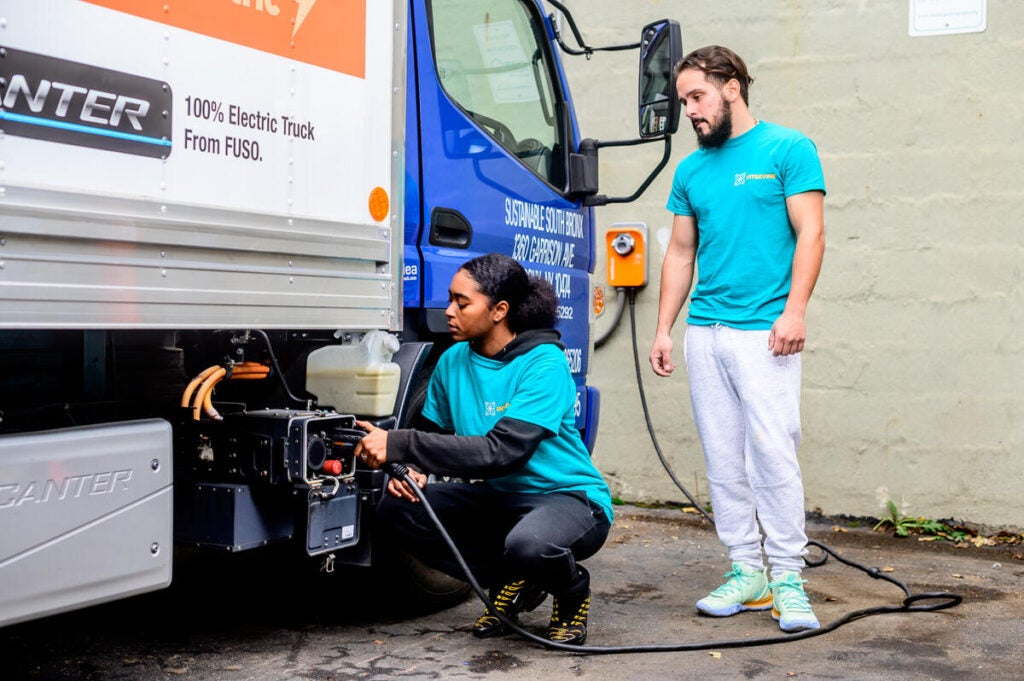Ramped connection can help states sustainably scale the grid to meet charging needs
By Casey Horan
The way charging customers connect to the grid is changing rapidly, especially in states working to meet transportation electrification and decarbonization targets. But regardless of policy goals, most states are experiencing increased demand for renewables accompanied by more customers seeking connection to the grid for projects like electric vehicle chargers, solar and storage. Balancing sustainable grid buildout with customer demand for load can pose challenges for utilities, and often results in interconnection delays.
States can enable faster deployment of EV chargers and timely interconnection using currently available policy and technical solutions, including: (1) hybrid interconnection; (2) flexible interconnection and (3) ramped connection. As the first two blogs in this series detail, hybrid and flexible interconnection can help interconnect EV chargers more efficiently and without exceeding grid capacity. Here, we discuss the ways ramped connection will allow customers to sustainably scale their energy usage over time and electrify more vehicles as upstream grid upgrades are completed.
Ramped connection can help states sustainably scale the grid to meet charging needs Share on XWhat is ramped connection?
In the distribution context, ramped connection typically involves an agreement between a developer and a customer to adhere to a certain peak energy usage, which is the logical extension of flexible interconnection. However, under a ramped connection scenario, the customer can scale their energy usage over time as the upstream grid is developed. Ideally, this would allow fleets to partially deploy their EV fleets and be assured by contract of obligation from the utility to serve more load (i.e., more charging) later. A ramped connection agreement can be as simple and low-tech as necessary. Theoretically, a fleet could execute a ramped connection by simply agreeing not to energize all their EV chargers at once.
For example, consider a fleet owner who wants to install 10 EV chargers with a collective capacity of 500 kilowatts, but the grid’s local hosting capacity is only 400 kW. Rather than delay the project to perform grid upgrades to accommodate 500 kW, the fleet owner could execute a ramped connection agreement with the utility to never exceed 400 kW or to limit usage until grid upgrades are completed. Once upgrades are complete, the fleet owner could increase their load to 500kW over time. Depending on the local grid constraints, each customer’s ramp schedule might look different. Some customers might be able to increase their capacity by way of a single step up, while others might require multiple steps. Like flexible interconnection, accountability for all parties can be assured using either software-based or hardware-based tools that limit energy consumption. In short, ramped connection is simple, scalable and offers a compromise between fleets requiring chargers and utilities requiring upstream upgrades.
Ramped connection offers a pathway to sustainably scale the grid and meet customer demand
Ramped connections offer a cost-effective, scalable solution that benefits both customers and utilities, both of which are incentivized to get load online as quickly as possible. However, despite the benefits ramped connections offer to both customers and utilities to meet load requirements on a shorter timeline, they have not been systematically deployed across utilities. This could be because it is historically irregular for utilities to offer flexible arrangements with customers. Otherwise, utilities may not be asking customers the right questions to enable understanding of whether a ramped connection agreement would suit a given customer’s situation.
As states are gearing up to meet EV charging demand, ramped connection must become a go-to solution for utilities balancing grid upgrade investment with meeting customer load demand in a timely manner. States can look to United Kingdom for guidance on implementation, which has seen promising success in using ramped connection to bypass customer delays for capacity upgrades ranging up to 14 years. Thus, utilities and regulators should take steps in the near term to encourage ramped connections more broadly. For example, utilities could collaborate more closely with customers to determine their load requirements, including the extent to which the customer’s loads can be stepped up over time. Furthermore, public utility regulators could require utilities to explore ways to shorten timelines for customers in the interim while upstream capacity upgrades are completed.
Ramped connection has potential drawbacks. It could add complexity to utilities’ planning and investment decisions. For example, when developing a ramped interconnection agreement, a utility may also need to weigh the relative costs and benefits of serving customer loads through incremental small grid upgrades, versus a single large upgrade. Additionally, ramped connection could be used as an excuse to delay upgrades for longer than necessary because the customer is receiving partial load. While these possibilities are important to keep in mind when working with utilities and decisionmakers, the benefits of ramped connection likely outweigh potential costs. Getting customers partial service faster means utilities begin collecting revenue that can pay for those upgrades sooner, and customers avoid the opportunity cost of not having service, such as their electric trucks going unused because they cannot charge. Ultimately, decisionmakers will need to work closely with utilities, regulators and other stakeholders in the near term to ensure ramped agreements are benefiting both the individual customers, and ratepayers broadly.
States must prioritize getting the grid ready for widespread transportation electrification as quickly as possible. Using ramped connection, states can facilitate faster interconnections, right-size projects and scale energy usage to match a quickly evolving energy landscape.
Casey Horan is a legal fellow for zero-emission transportation at EDF.











